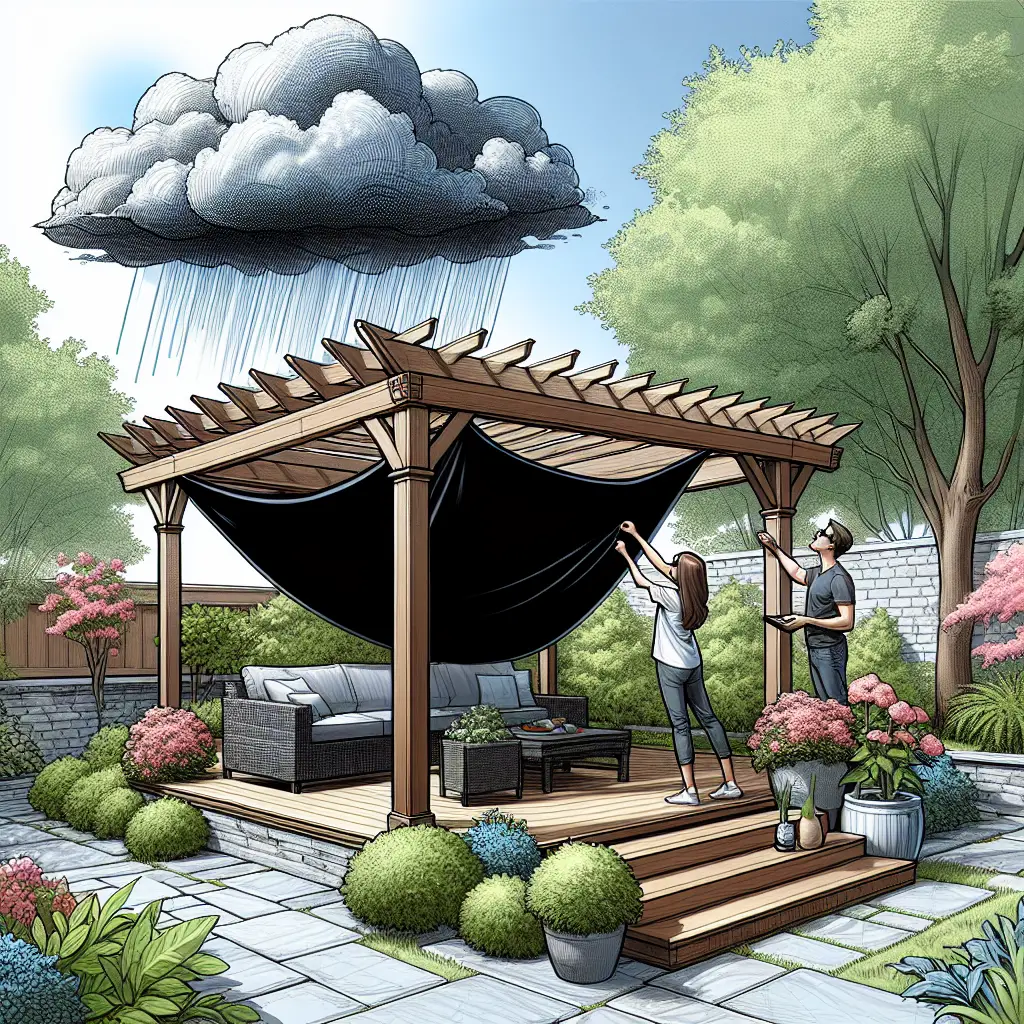How to Cover a Pergola (From Sun and Rain)
Ever stood under your pergola on a sunny afternoon, only to be scorched by the blistering sun or, ironically, caught in a sudden rain shower? Your architectural feature, while beautiful and elegant, might not be serving you to its full potential. Fear not, because protection from the elements can be stylish, efficient, and completely in your control.
Why Cover Your Pergola?
A covered pergola extends the possibilities of your outdoor entertaining and personal tranquil space. It protects against UV rays and inclement weather, prolongs the lifespan of the structure, and increases your home’s overall value. Plus, with the right cover, it can enhance the aesthetics of your backyard paradise.
Choosing the Right Material
Before we delve into the various covering options, consider the material suitable for your needs. Sunset Magazine Sunset Magazine highlights the importance of selecting a durable, weather-resistant fabric or material.
- Polyvinyl Chloride (PVC)
PVC is a strong, lightweight option for those seeking a permanent solution to their pergola coverage problem. It’s waterproof and available in various colors to match your design aesthetic. However, it’s non-biodegradable and may not appeal to eco-conscious homeowners. -
Polyethylene Covers
A Polyethylene cover is a less permanent but equally effective option. It’s perfect for gardeners looking for a quick and eco-friendly solution due to its recyclable nature. Many retailers, like Wayfair, offer a range of polyethylene covers suitable for a pergola canopy. -
Canvas
Canvas canopies provide a classic look and come in a variety of UV-rated options. While not entirely waterproof, they are water-resistant and provide ample sun protection. For added personal touch, DIY homeowners often choose canvas due to its versatility. -
Metal Panels
If you prefer a sturdier option, galvanized steel or aluminum panels might be your match. They last for years and stand up well to extreme weather. Manufacturers such as Home Depot offer an array of styles and sizes catering to the metal panel approach.
Innovation in Installation
With your material in hand, let’s talk installation. Remember, your choice of installation oftentimes goes hand-in-hand with the type of material you’ve selected.
- Retractable Canopies
For those who enjoy versatility, retractable canopies allow for sun exposure when wanted and shade for those blistering midday temperatures. Motorized systems up the ante on convenience but require a higher budget. -
Louvered Roofs
Interest in louvered roofs has skyrocketed due to their adjustable slats. These systems adjust to let in light or protect from rain with the push of a button. Although costly, they are a sleek and modern choice for tech-savvy homeowners. -
Fixed Panels
Installing fixed panels grants a permanent solution that often requires little maintenance. Simply ensure the slope allows for proper rainwater drainage, and you’re set to enjoy your outdoor space come rain or shine. -
Sail Shades
For a nautical twist, sail shades are an affordable and stylish option. Secure stainless steel posts or use the existing pergola structure to mount the shades, creating a dynamic appearance and ample coverage.
Decor and Durability
Once your cover is installed, consider the impact on your backyard’s decor and ecosystem. Better Homes & Gardens Better Homes & Gardens recommends integrating climbing plants for a green overhead canopy that offers both shade and a luscious aesthetic. Vines like wisteria or ivy use the pergola’s structure to climb, adding a romantic vibe to your garden escape.
For added atmosphere, string lights, lanterns, or weather-safe chandeliers can be hung from the beams of your newly covered pergola. This added touch can transform your day shelter into an enchanting evening retreat.
Seasonal Considerations and Maintenance
With every outdoor feature, maintenance is key. Seasonal weather changes dictate the type of coverage and the care required. In the spring, clean pollen and debris from your cover, making sure that any retractable systems are lubricated and functioning smoothly. Summer may require more frequent cleanings due to bird activity and storms. Come autumn, ensure leaves and twigs are removed to prevent mold and mildew growth. Winterize your pergola by inspecting the structure for damages before the snow and ice set in.
Wrap Up: Making The Right Choice
Selecting the ideal pergola cover can feel overwhelming, but by breaking down your choices by material, installation type, and design aesthetics, your outdoor space can become the refuge you’ve always imagined. Keep in mind that whatever you choose, it should reflect your personal style, budget, and the functionality you desire. Whether you opt for a DIY project or a professional installation, remember to consider durability and how the cover will blend with the natural elements of your garden.
When seeking professional advice or services, it’s always best to consult with a local contractor or landscape designer. They can provide planning and implementation services that resonate with your region’s specific climate and zoning regulations.
Your pergola should serve as your personal oasis, providing shade and protection while also harmonizing with your home’s exterior aesthetic. With these guidelines in hand, you are well-equipped to make an informed decision on how to cover your pergola effectively. Here’s to many enjoyable days and nights in your beautifully enhanced outdoor living space, rain or shine.


